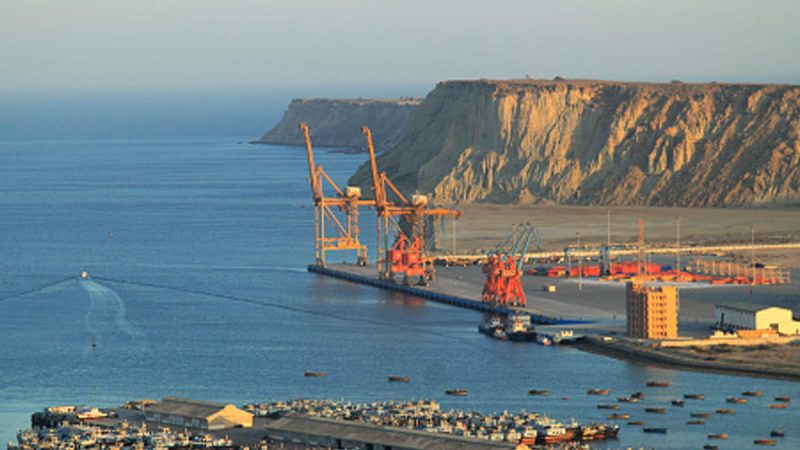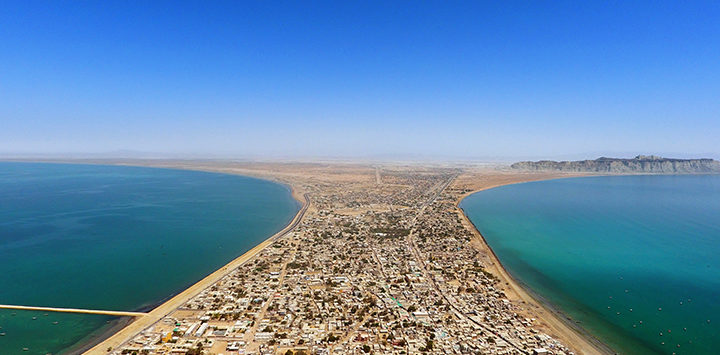
Gwadar port current development
The small port city of Gwadar is the focus of the $50 billion CPEC project, a part of the Pakistan Belt and Road initiative, in the South-West of Pakistan. Under CPEC, Gwadar is to be built into a smart port city and will not only be a major commercial port but also a growing urban centre of its own. In February, Shahzeb Khan Kakar, Director-General of the Gwadar Development Authority (GDA), told the building association in Karachi that the new master plan for Gwadar had been accepted and that the port city would become Singapore in Pakistan. He called Gwadar, a place which is a home for 85000 people, “Pakistan’s safest city,” and encouraged the builders to invest.

Under the GDA-approved Gwadar planning system, the city will be divided into separate functional zones and a special economic area, and the population is expected to reach 2 million by 2050. Besides, according to the master plan, Gwadar’s GDP will grow to $30 billion by 2050 and generate 1.2 million jobs.
“Think of Dubai but on a much larger scale and in a faster timeframe,” one article stated. “The master plan outlines how Gwadar will become the economic hub not only of Pakistan but of the entire South Asian region.”
Some outlets have announced that a $10 billion artificial island is being constructed near Gwadar under the master plan and creates great excitement among investors and the public in the media buzzing around the project. “Think Dubai, but much more and more rapidly,” one article read. “I think Dubai. “The master plan explains how Gwadar will become the economic centre of Pakistan as well as the entire region of South Asia.”
GDA’s role in the development
However, the GDA soon calls upon investors to concentrate on other items that the master plan provides to refute the rumour about the island. The approval of Gwadar’s master plan was very promised to CPEC at a time when the project was facing a downturn. But despite all the lucrative opportunities provided by this plan for investors, three main reasons can not be met. First, Pakistan has no cash to pay for this master plan. This is the crude truth. It will take over $750 million to finance Gwadar’s fundamental infrastructure, even in optimistic figures.
Background and Challenges in the Development
The Pakistani economy was in doldrums even before the Covid-19 crisis began, with a deficit in its balance of payments depending on the International Monetary Fund. A staff-level agreement with IMF recently reached Pakistan that will result in Pakistan disbursement for budgetary support of $450 million. It would be inconceivable if Pakistan had the funds to build its dream city in Gwadar under these circumstances. The CPEC itself does not have any financial arrangements to execute the whole master plan. It should be noted.
Secondly, Pakistan did not have the requirements until it became major port cities for Dubai and Singapore. The Dubai rulers had plenty of oil available and used it to build basic infrastructure. No such role exists in Pakistan. Also, Dubai and Singapore had authoritarian regimes that made such a wide development possible. Pakistan has, on the opposite, a polarising democracy and a broad spectrum of opposed interests power players. Without disputes, a scheme of this nature is almost impossible to execute.

Third, the success of the CPEC in general and the Gwadar plan, in particular, is dependent on the climate of Pakistan’s- China relationships. For example, the 300-megawatt power plant in Gwadar, part of the CPEC scheme, had taken the provincial government of Balochistan over three years to build, even though Gwadar had to face serious power cuts.
The future and promise of the Gwadar Port
While strategic relations in recent decades have strengthened, economic relations also increase and decrease. If Pakistan decides against China’s interests, Beijing will pull the CPEC plug. In that case, Gwadar wouldn’t even get its highways and new international airport promised under CPEC. Pakistan has placed a ban on the entry of Chinese workers in Gwadar from China because of the outbreak of coronavirus, and if the situation is unfavorable to China then Pakistan must be ready for a harsh response in Beijing.
In Islamabad, policymakers are not reckless enough to think differently. This is why the master plan approval and all media hype can be seen as an exercise in public relations. This master plan has rekindled Gwadar investment interests and also injected life into the 2019 CPEC. For the time being, the master plan is therefore achieving its expected goals, and decisions in Pakistan will not be taken by 2050.
Further updates and changes are expected to occur soon. Stay in touch for news and real estate updates!
